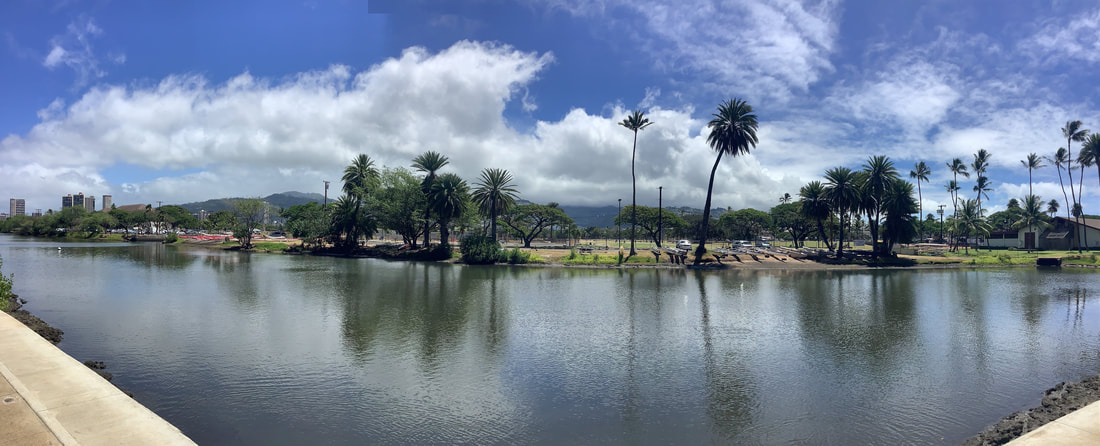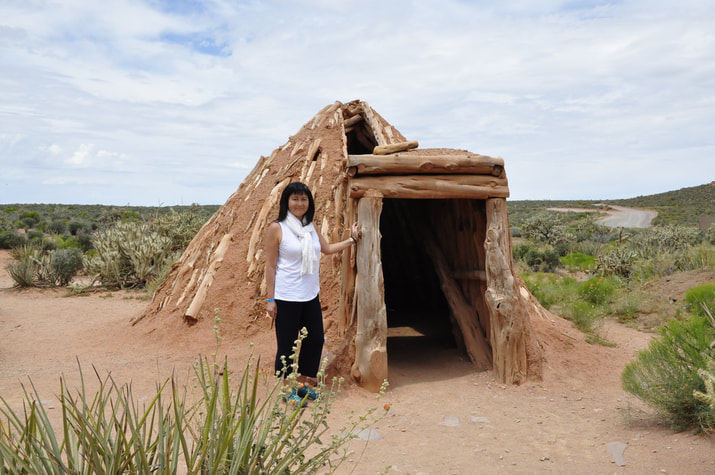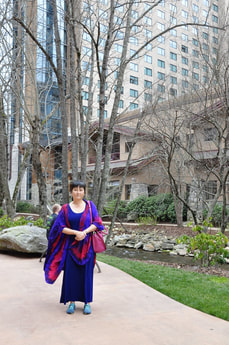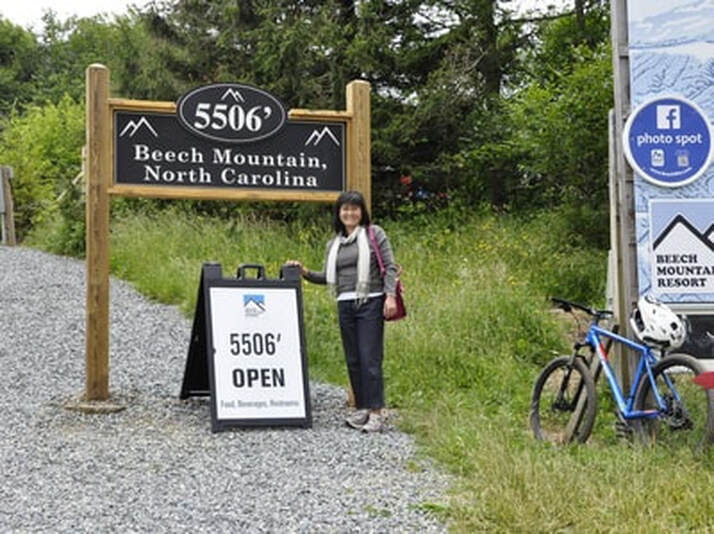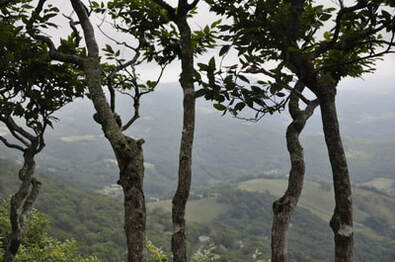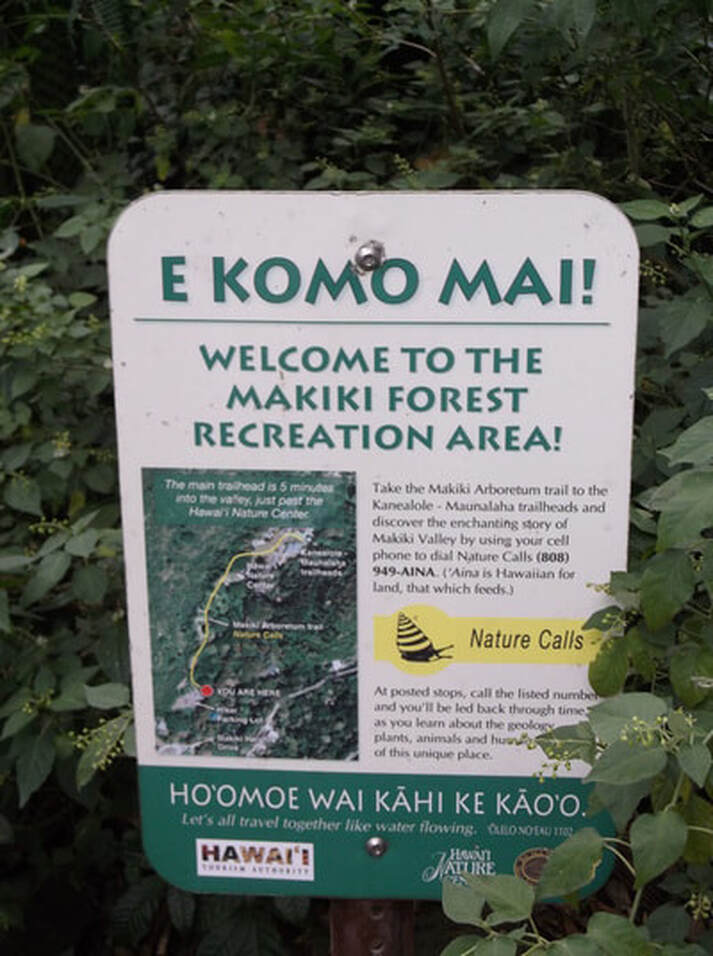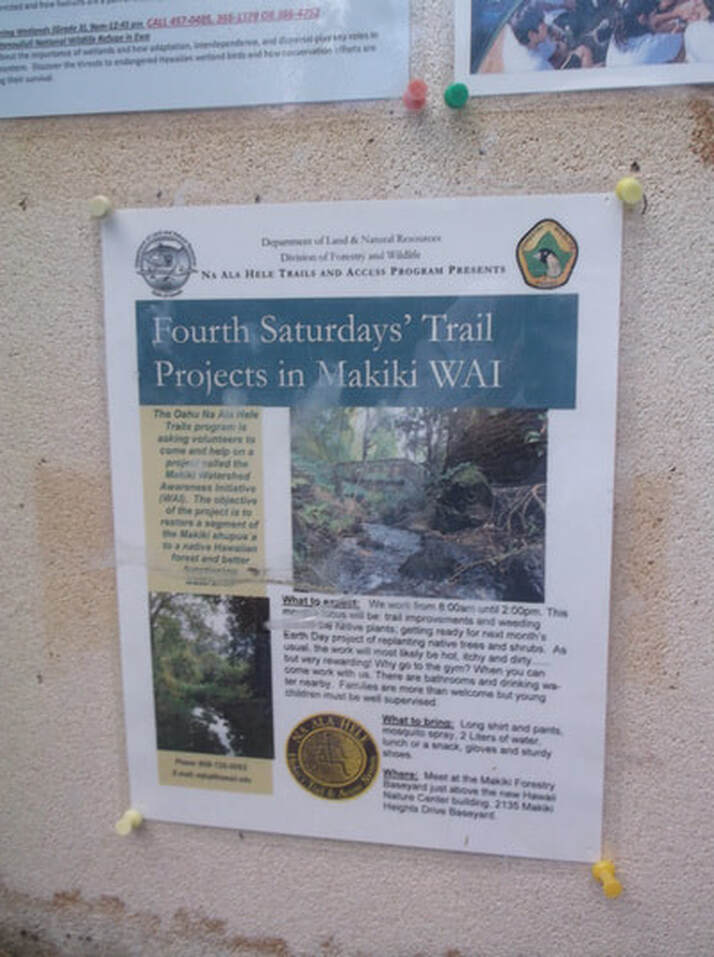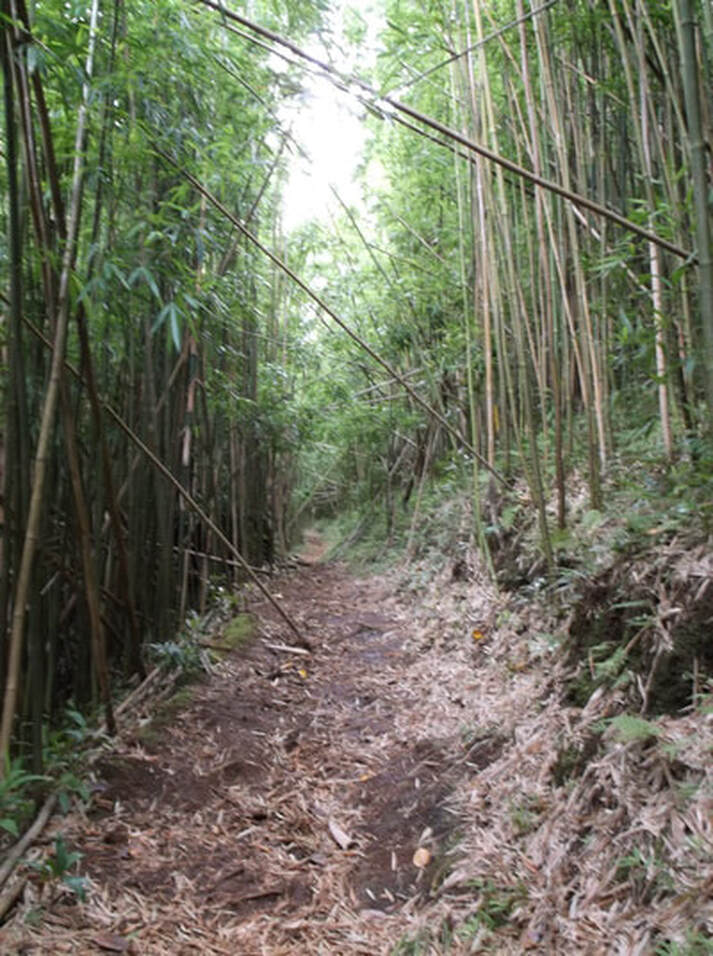| Emy Louie, Consulting Services |
CONSERVATION
Above. The Ala Wai Canal.
Lower left. Diamond Head lies in the background. Honolulu, Hawaii, USA. Photo by Jason Stone.
Lower left. Diamond Head lies in the background. Honolulu, Hawaii, USA. Photo by Jason Stone.
Its grayish-black bulb is rough and fuzzy. Its lush leaves look like small canopies.
As a food source, its cooked texture is grainy. Though through time, it can be smooth, even creamy.
Whichever method of preparation, it is hardy.
Its scientific name is Colocasia esculentaor is known simply as "kalo."
As a food source, its cooked texture is grainy. Though through time, it can be smooth, even creamy.
Whichever method of preparation, it is hardy.
Its scientific name is Colocasia esculentaor is known simply as "kalo."

After a long journey, you disembark from your bus and take a deep breath. Clear mountain waters reflect the sky above as you see sweeping views of craggy fissures juxtaposed against the clear blue sky. Little did you know that what you see are the results of decades-long ongoing and unrelenting work of volunteers, conservationists, and naturalists to ensure that you enjoy this destination.
The following notable destinations showcased below are places I visited in which I am an outsider, an observer, and a researcher of these destinations. And for each destination, site, or project shown on these pages, I will describe the hard work involved to make it possible for you and me to enjoy each site in its present state. I will tell you who manages the site and how its management is coordinated between different organizations, and sometimes how that management and stewardship process can evolve over generations.
Destinations in the United States include a fancy hotel in Southern California; two Indian reservations: one on the west coast and one on the east coast; a ski resort area east of the Mississippi; a legendary body surfing spot in Hawaii; and a simple hiking trail only minutes away from the bustling city.
Moving forward, you and I can do similar things as I am pleased to present to you the "Ala Watershed Special Resource Study Report!"
Emy Louie
February 12, 2023
The following notable destinations showcased below are places I visited in which I am an outsider, an observer, and a researcher of these destinations. And for each destination, site, or project shown on these pages, I will describe the hard work involved to make it possible for you and me to enjoy each site in its present state. I will tell you who manages the site and how its management is coordinated between different organizations, and sometimes how that management and stewardship process can evolve over generations.
Destinations in the United States include a fancy hotel in Southern California; two Indian reservations: one on the west coast and one on the east coast; a ski resort area east of the Mississippi; a legendary body surfing spot in Hawaii; and a simple hiking trail only minutes away from the bustling city.
Moving forward, you and I can do similar things as I am pleased to present to you the "Ala Watershed Special Resource Study Report!"
Emy Louie
February 12, 2023
|
Left. At a Navajo sweat lodge near Grand Canyon Skywalk, Grand Canyon West, Arizona, United States.
See also the homepage about the Grand Canyon Skywalk. |
|
Right. A town on the Cherokee Nation's reservation, Cherokee, North Carolina, marks the easternmost end of the Trail of Tears National Historic Trail, is the terminus of the southernmost end of the Blue Ridge Parkway, and shares a northern border with the Great Smoky Mountains National Park, of which all three above mentioned units are managed by the United States National Park Service (NPS).
Regarding the Trail of Tears National Historic Trail which is comprised of about 2,200 miles (3,500 km) of trails, the NPS works in partnership with the Trail of Tears Association, other agencies, and groups to manage the Trail. Also noteworthy is the Great Smoky Mountains National Park, a UNESCO World Heritage Site, which attracts about 10 million visitors each year, twice that of any other national park. Managed by the Cherokee Fisheries and Wildlife Management, Cherokee also boasts legendary trout fishing as it is one of the few places where one can trout fish while elk pass through the river. |
|
Right. At and around Sandy Beach, Oahu, Hawaii, USA
Under the management of Livable Hawai’i Kai Hui, Oahu’s Sandy Beach and its surrounding areas result from the work of non-profits, government, and grassroots advocacy. The advocacy is called the “Save Sandy Beach” initiative which is part of the Ka Iwi Coalition, whose goal is to keep the Ka Iwi coast between Sandy Beach and Makapu‘u Point in its natural state. Earlier in the process of “Save Sandy Beach,” a major success was the Honolulu City Council’s rezoning of land mauka of Sandy Beach from “residential” to “preservation.” Later, to further ensure the protection of scenic views, nature, and wildlife at Sandy Beach for perpetuity, the following occurred. The city, along with The Trust for Public Land, held a conservation easement. Also noteworthy is The Trust for Public Land conveyed the last two pieces of land around Sandy Beach for conservation. Finally, protective deed restrictions were imposed by the State of Hawai’i Department of Land and Natural Resources. |
|
Right. "My Alaskan Adventure HIGHLIGHTS," VIDEO, and "An Alaska Back Country Adventure," BLOG, show a visit to Kenai Fjords National Park and Denali National Park and Preserve, Alaska, USA. The following are notable points of these two national parks, both of which are managed by the United States National Park Service.
The 669,984 acres Kenai Fjords National Park contains numerous fjords which are inlets or valleys of water created from glaciers, of which there are least 38 glaciers nearby. Much bigger than Kenai Fjords National Park is the 6,045,153-acre Denali National Park and Preserve, which is bigger than three of the smallest states combined. Notably, the Denali National Park and Preserve's Park Road for 92 miles (148 km) parallels a relatively narrow, 400-mile-long (650 km) Alaska mountain Range. The long road in the Park then ends at Kantishna, an unincorporated community surrounded by Denali National Park and Preserve, which contains private property owners. Thus, sometimes different goals and objectives between the private property owners of Kantishna and the National Park Service of Denali National Park and Preserve creates an unusual relationship between the two groups, both which are located in the Denali Borough/County of Alaska. Therefore, even though mosquitos in Kantishna limited the number of visitors, to keep with the intent of the Denali National Park and Preserve, the number of buses that traveled along the 92 miles of road within the Denali Park was closely monitored. Also closely monitored was the quantity of lodging in Kantishna. Furthermore, mining activities were a topic of discussion. |
|
"I have known Emy for the past seven years as a member of a Raleigh based cultural and social organization. She has a calm and relaxed demeanor and the ability to communicate well in diverse settings. She is a clear and focused speaker and I believe would be very effective in coaching others to develop their own unique style. She offers insight and information which anyone seeking to improve their speaking skills would find helpful. She is poised, professional and an excellent role model. I highly recommend her services." Left. The heavily trafficked Moleka Trail is part of the Honolulu Mauka Trails System, managed by the State of Hawai‘i Department of Land and Natural Resources Division of Forestry and Wildlife, whose management program for the Moleka Trail is called the “Na Ala Hele Trail and Access Program." Honolulu, Hawaii, USA.
Below. Further up Makiki Heights at the end of Moleka Trail is a bamboo forest. Above. Hula to Henehene Kou 'Aka
|
|
Left. At the Millennium Biltmore Hotel in Los Angeles, California, USA. Designated a Los Angeles Historic-Cultural Monument, the Biltmore is part of a preservation program that initially began in the Los Angeles chapter of the American Institute of Architects, in which the program later became the Cultural Heritage Board. Photo by Jay Smith.
"It is a rare person who can stand before a crowd, whether it is a dozen or hundreds of people, deliver a captivating monologue, and communicate an important issue effectively. When Emy talks about an issue she feels strongly about, that issue becomes more important in the minds of her audience. That is the mark of a great public speaker." |
